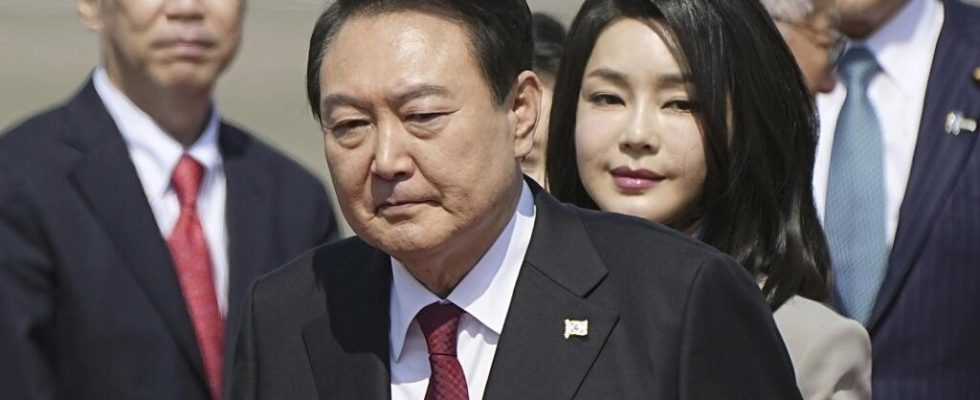North Korea fired a long-range ballistic missile on Thursday (March 16) while South Korean President Yoon Suk-yeol is in Tokyo, Japan. This is the first summit between the two countries for twelve years, and it is necessarily taking place in a tense security context in the region. Since the beginning of the week, South Korea has been conducting large-scale joint military exercises, and Pyongyang is responding with missile fire.
With our correspondent in Seoul, Nicholas Rocca
The historic summit between South Korean President Yoon Suk-yeol and Japanese Prime Minister Fumio Kishida was to revolve around memorial and defense issues. With this long-range ballistic missile launch on Thursday, March 16, North Korea guaranteed that she would be at the heart of the talks, as Yoon Suk-yeol arrived in Japan.
The objective for Tokyo and Seoul is to put an end to years of differences and to improve their communication, in particular in the military field. The two allies of the United States have notably agreed to automatically and in real time share information on the firing of North Korean missiles. Chun In-bum, a retired general and former leader of South Korea’s special forces, explains:
” When an event occurs, that everyone has access to information without human interference is a great asset. Because the North Koreans can have a missile that hits a target in South Korea in three to five minutes. So even if we can benefit from even 10 or 15 seconds of additional warning time, it gives us better security and it improves our chances of survival. »
Faced with the considerable improvement in Pyongyang’s military resources over the past five years, and in a context of growing tensions with China, Washington wants to see Tokyo and Seoul put aside their historical differences in favor of effective military collaboration. After offering a compensation plan for victims of Japanese colonization of the peninsula without the participation of Japanese companies, South Korea is certainly expecting a gesture in return from Tokyo.
